Anishinaabe history threads its way throughout Michigan, holding centuries of cultural richness. Honoring the sites from the Odawa (Ottawa), Ojibwe (Chippewa) and Potawatomi (Bode’wadmi) tribes brings a sense of serenity. Join us as we search for Sacred Rock along Lake Huron’s shoreline. We want to place our hand on history. This “Big Rock,” as locals call it, waits patiently to be recognized. A tell-tale sign is, it is said, to seep crimson, believed to be blood, when it rains.
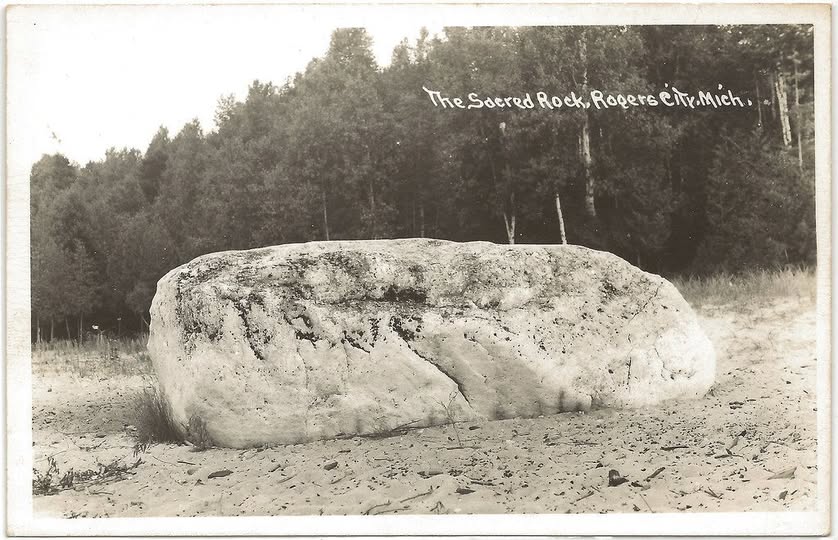
Photo Credit: Presque Isle Historical Museum, Roger’s City, Michigan
Hoeft State Park
Located five miles north of Rogers City, Hoeft State Park provided the place to begin our stroll. Alongside the gentle lapping waves of Lake Huron, we moved northward on the rock-filled beach. I found myself drawing in deep breaths, filling my lungs and settling my soul.
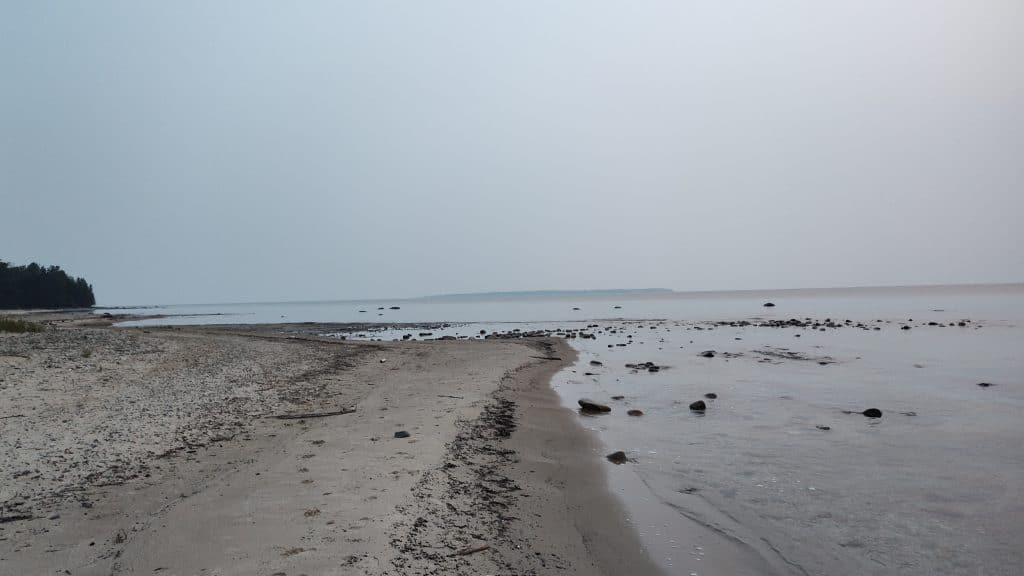
We’d never been to this area, so we weren’t sure exactly how far we’d have to walk. The humidity hung over us, while wild fire smoke gave the illusion of cool fog. We only knew that Sacred Rock was somewhere in the distance, between Ocqueoc River and Swan River. It had once been a landmark between two competing Anishinaabe tribes.
I confess that I kept stopping to pick up interesting rocks. Quartz often catches my eye. It’s just something I do on our adventures. Another woman was crouched in front of her cottage doing the same. “I always look for heart shaped stones.” she explained as we made room for each other. “I add them to my garden.” She smiled and continued her hunt. I asked, “Do you know how far the Sacred Rock is from here?” She briefly looked my way. “Ahhhh, about a half mile or so.” The woman nodded and returned glancing downward. “Thanks!” I called as I stepped into the dry sand giving her plenty of space. I forced my gaze forward, toward our distant goal, not wanting to intrude on her rock collecting. Soon, I was bent over searching once again.
Our hike took us in front of many privately owned homes and cottages. So, we remained at the water’s edge, respectful of the residents.
Sacred Rock
Chuck moved quickly down the beach, while I continued to frequently fill my pockets. After a short while Chuck called to me, “I think that’s it.” He nodded toward a boulder up ahead. Weighted down, I slowly caught up with him, spying the 20 foot long, 8 foot wide engadine-dolomite landmark. Dolomite is similar to limestone (calcium carbonate) but also contains magnesium. Dolomite is harder and less reactive to acid than limestone.
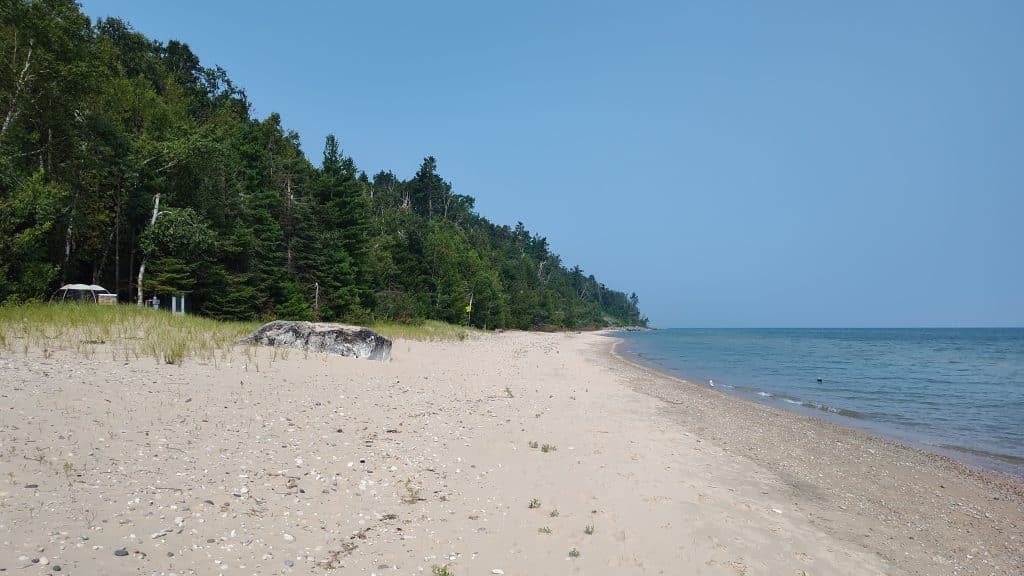
This boulder has served as an Anishinaabe meeting place, witnessing centuries of tales. I imagined ceremonious story telling and animal sacrifices which have taken place at this site.
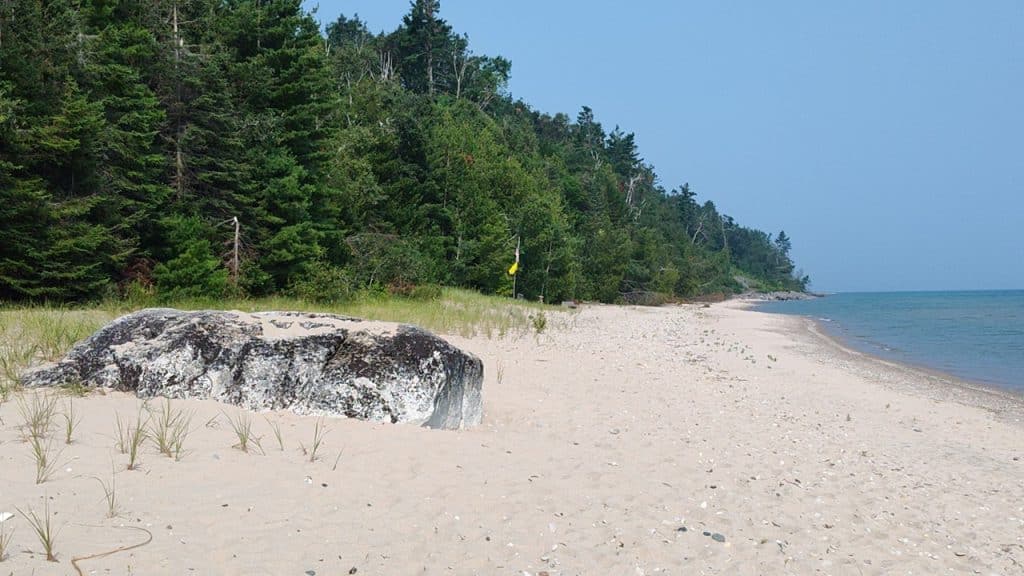
This massive boulder is a “Guardian of the Lake” and has served as a nautical reference for ages. It is said to hold mythical powers, watching over those who traverse this water.
The Bleeding Rock
Once used for animal sacrifices, this boulder had been reported to seep blood during heavy rainstorms.
Another bloody legend, recorded by Frederick Denny Larke, explains how this massive rock became a border between two rival tribes, marking their separate hunting grounds. The legend tells how one chief would continually crossed over the unmarked boundary. This angered the opposing chief immensely. One day the two enraged leaders met at this spot and began swinging insults and fists at one another.
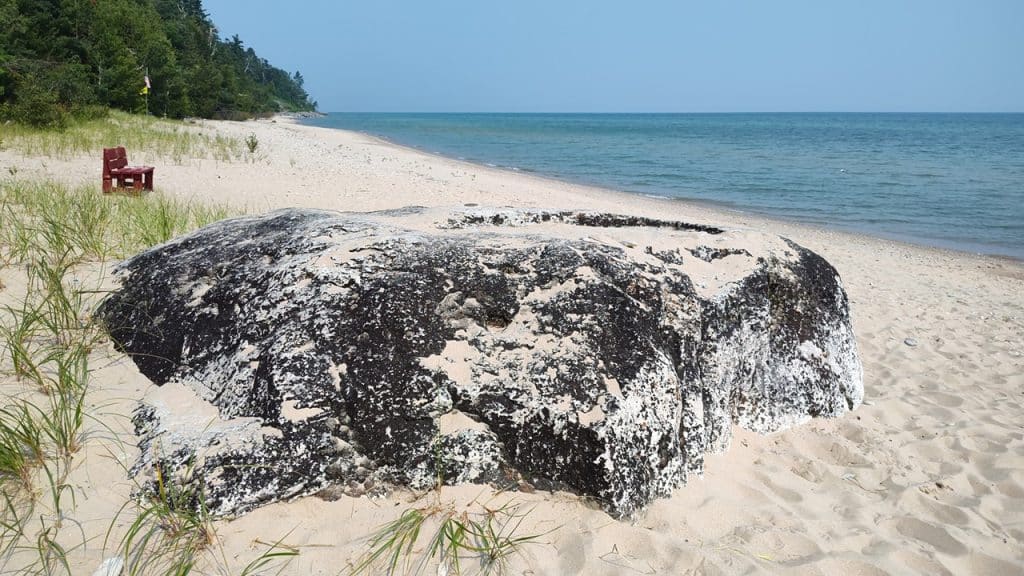
That’s when the Great Spirit, Gitchie Manitou, lost his patience with these childish chiefs. Attempting to prevent a war between the tribes, Gitchie Manitou hurled this rock upon the two quarreling leaders, crushing them instantly. Today, when it rains, blood from these chiefs flows from beneath the boulder. It is said that the sandy bank and beach grass continue to quake in fear of Gitchie Manitou’s power.
Spiritual Offerings
As I sat in the sand, water lapped peacefully. I imagined the generations before me who’ve looked out from this spot.
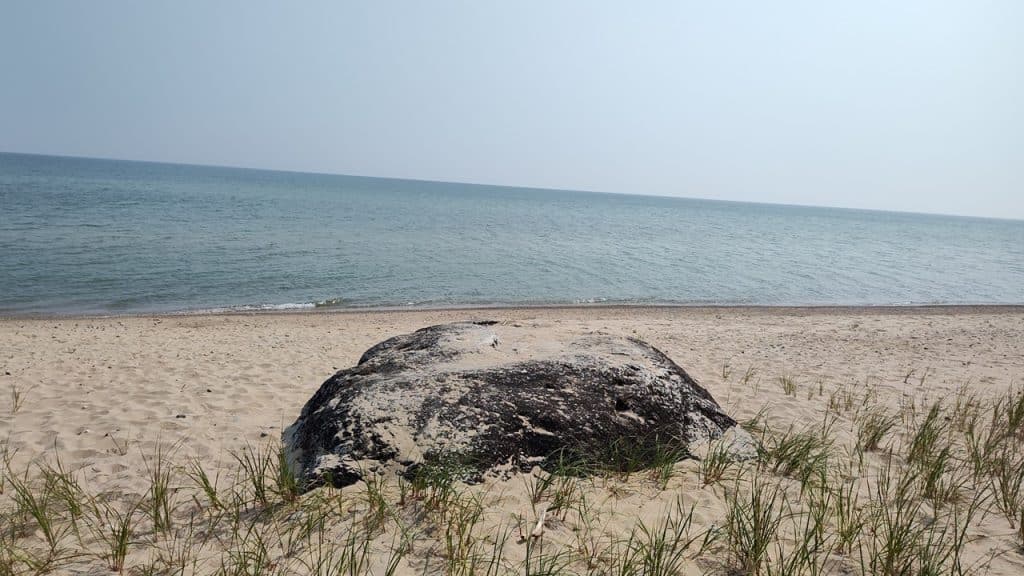
Spiritual gatherings still take place at Sacred Rock. As with other Anishinaabe hallowed grounds, offerings are made. Braided sweet grass and tobacco are left for safe journeys. Flowers and shells are laid upon the surface of the large boulder, too.

Touching Sacred Rock
As I moved closer, preparing to touch history, I noticed a metal circle. Is that an offering? I briefly wondered. But it’s not natural. Leaning in I read the scratched surface – a survey marker!
I brushed aside the oddity of a metal marker and laid my palm over the sandy surface of this ancient, solemn rock. I felt centuries of energy pulsing beneath my fingertips. With my eyes closed I dreamed of past gatherings around this space and the mystical power of the vista. I placed three small, white quartz rocks atop the boulder to honor the three tribes. I decided to add one more rounded rock in remembrance of my Uncle Bob. A nourishing gesture for my spirit.
Then, patting the dolomite, I turned to Chuck. “Why is there a survey marker on here?” He inspected it and noted how this boulder is a solid, recognized site.
Survey Marker
These markers are used by surveyors for accurate measurements when constructing maps. I was astounded to see a modern, brass insignia permanently affixed to the surface of the sacred stone. Apparently, the United States Army Corps of Engineers had placed this tag in the recent past. This metal plaque has already been scuffed by blowing sand.
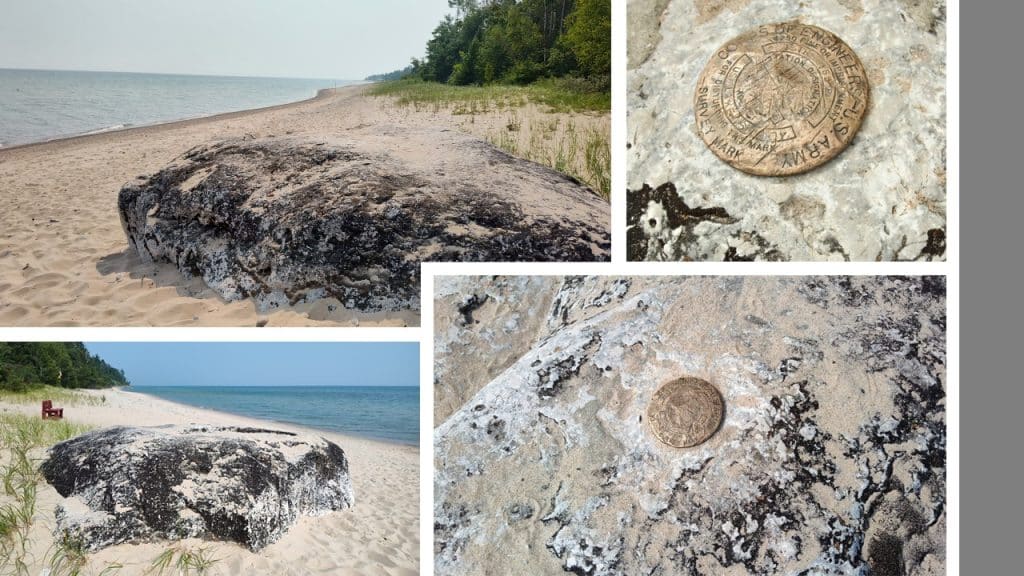
Photo Credit: (top right) Lost In Michigan
This Sacred Rock has stood as a landmark for centuries. Now, crowned with a survey marker, it continues to serve as a modern “Guardian of the Lake” for adventurers and travelers.
Stay Curious
Hazy sunshine and warm breezes met us that day along Lake Huron, so Chuck and I weren’t able to witness seeping crimson.
Even today, travelers stop to leave trinkets, feathers, and tokens of respect. Because some places hold more than history—they hum with memories.

Resources:
Presque Isle Historical Museum, Roger’s City, Michigan
Lost In Michigan Sacred Rock article
Sunrise Coast Pure Michigan article
MaryLou Driedger blog
Awesome Mitten article
Zone 6B Garden braiding sweetgrass Facebook photo
Anishinaabe Resources website
Alamay Sacred Rock description





